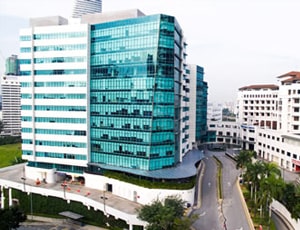Treatment cost

Parkway Pantai located in Kuala Lumpur, Malaysia is accredited by JCI. Also listed below are some of the most prominent infrastructural details:

Brachial plexus injury is a medical emergency caused due to an injury to the brachial plexus group of nerves that sends signals from your spine to your shoulder, arm, and hand. These nerves control and administer feelings in the muscles of the shoulder, elbow, wrist, hand, and arm. This damage is also known as brachial plexopathy. Brachial plexus injury appears when these nerves are compressed, stretched, or in the most serious case, ripped apart from the spinal cord. Some brachial plexus injuries known as stingers or burners are inconsequential and will completely recover in a few weeks. However, other brachial plexus injuries are severe enough and may cause some permanent impairment in the arm. In severe conditions, it can paralyze your arm, with a failure of function and sensation.
Brachial plexus injury results when the brachial nerves are damaged by excessive stretching, pressure, or cutting. Stretching can occur when your shoulder is forced down while your neck stretches up and away from the injured shoulder such as during a motorcycle or a car accident. In case of a serious injury, the brachial nerve may rip off the spinal cord in the neck. This type of brachial plexus injury is classified as a traumatic brachial plexus injury. It may occur because of different reasons, including:
Brachial plexopathy may also result from exposure to radiation at the time of stereotactic radiosurgery or specific procedures such as stereotactic breast biopsy.
Symptoms of the brachial plexus injury depend on the seriousness of the injury. A minor injury can often occur during any contact sport and minor trauma when the brachial plexus nerves get stretched or compressed. Minor brachial plexus injury symptoms include the following:
More serious brachial plexus injury symptoms result when nerves are torn or ruptured. Such injuries may produce the following symptoms:
In case of childbirth brachial plexus injury, symptoms can be seen right after the birth of the child. These may include:
Some common types of surgical brachial plexus injury treatment include the following:
It is very hard to assess an exact recovery time after brachial plexus injury treatment due to the broad spectrum. How likely a spontaneous recovery depends on the type and severity of the injury.
In the case of surgery, nerve tissue grows very slowly, about an inch a month, so it can take a few years to assess the success of brachial plexus injury surgery. However, during the recovery period, patients are encouraged to keep their joints flexible by following an exercise schedule. The success rate of surgery is quite good but recovery time and success rate must be assessed on an individual basis.
Ask your healthcare adviser for the best multiple options and choose the one that meets your expectations
The cost of Brachial Plexus Injuries/Stereotactic Procedures in Kuala Lumpur may differ from one medical facility to the other. There are many hospital who cover the cost of pre-surgical investigations of the patient in the treatment package. The Brachial Plexus Injuries/Stereotactic Procedures package in Kuala Lumpur includes the fees of the surgeon, hospitalization and anesthesia as well. There are many things that may increase the cost of Brachial Plexus Injuries/Stereotactic Procedures in Kuala Lumpur, including prolonged hospital stay and complications after the procedure.
There are many hospitals that perform Brachial Plexus Injuries/Stereotactic Procedures in Kuala Lumpur. The top hospitals for Brachial Plexus Injuries/Stereotactic Procedures in Kuala Lumpur include the following:
After Brachial Plexus Injuries/Stereotactic Procedures in Kuala Lumpur, the patient is supposed to stay in guest house for another 15 days. This is important to ensure that the surgery was successful. During this time, control and follow-up tests take place to check for medical fitness.
There are certain additional cost that the patient has to pay apart from the Brachial Plexus Injuries/Stereotactic Procedures cost. The per day extra expenses in Kuala Lumpur per person are about 30 USD.
The average duration of stay at the hospital after Brachial Plexus Injuries/Stereotactic Procedures is about 3 Days for proper care and monitoring. During the recovery, the patient is carefully monitored and control tests are performed to see that everything is okay. If required, physiotherapy sessions are also planned during recovery in hospital.
There are around 1 Hospitals hospitals in Kuala Lumpur that offer Brachial Plexus Injuries/Stereotactic Procedures to international patients. These hospitals have the required expertise as well as infrastructure available to handly patients who need Brachial Plexus Injuries/Stereotactic Procedures. These hospitals comply with all the rules and regulations as dictated by the regulatory bodies and medical association in Kuala Lumpur